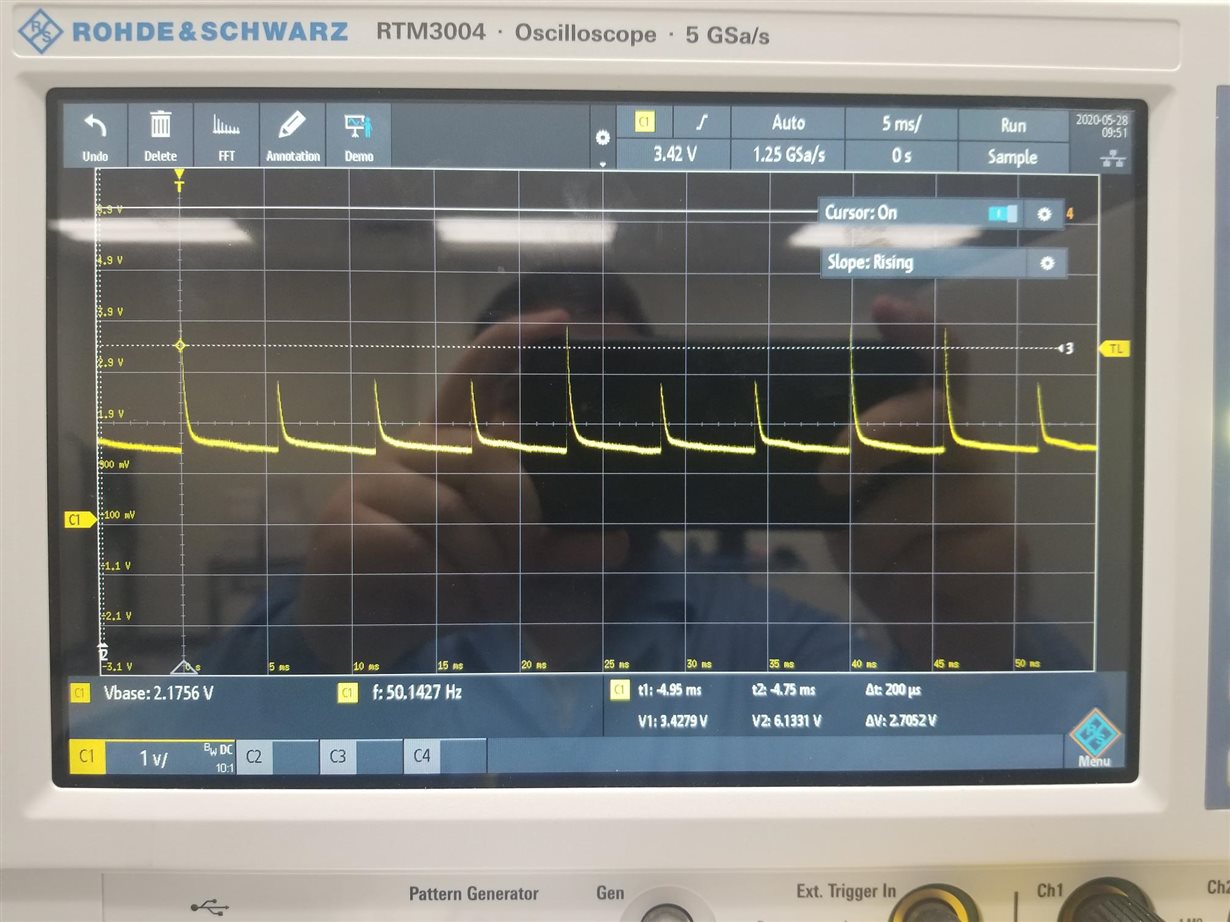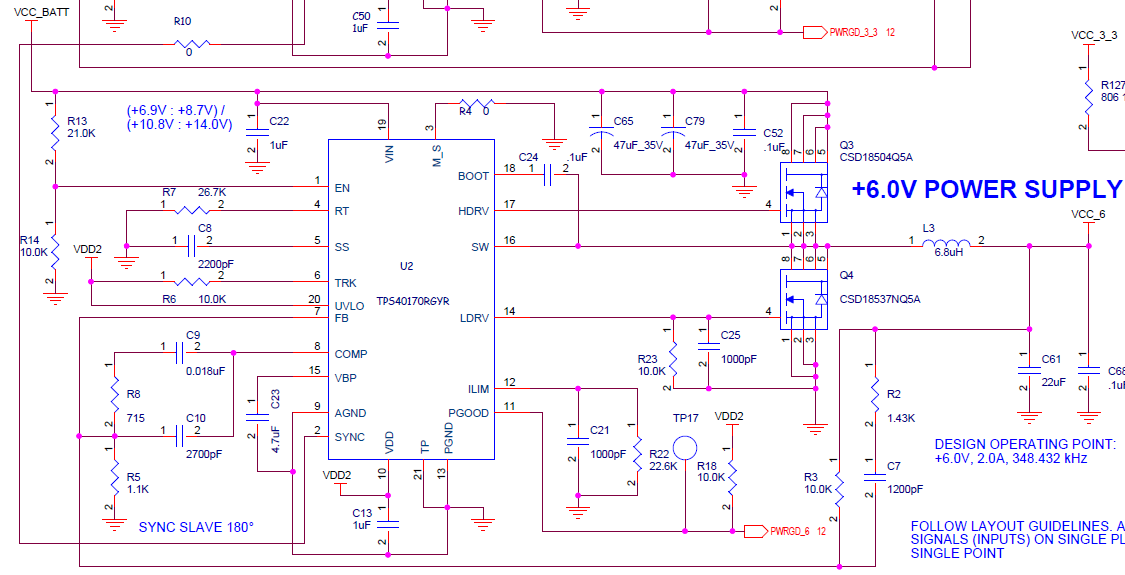Other Parts Discussed in Thread: CSD18504Q5A, CSD18537NQ5A,
Tool/software: WEBENCH® Design Tools
Good Morning,
We designed a system that utilizes the TPS40170. We used WEBENCH to design the system to set the voltage at approximately 6V and with a current limit of 6 amps with an input range of 6.9V to 25V. The design was originally created back in 2016. At room temperature the circuit works as expected but as the temperature is dropped towards -20C the circuit begins to fail. We normally set the input voltage to 12V but I noticed that as the system gets colder and fails, if I increase the input voltage the system will begin to work again. All components are rated for -40C. The failure that I'm seeing shows the output voltage spiking and then falling quickly before reaching 6V (typically just under 3V, it then appears to repeat itself after approximately 5ms. We were trying to possibly adjust current limits to see if that resolved the problem but we cannot recreate the design we have in WEBENCH due to the MOSFETs being unavailable as substitute parts any longer (CSD18504Q5A and CSD18537NQ5A). I tried to use the equation for calculating R_ILIM in the datasheet but I cannot recreate the calculated value provided by WEBENCH. Any help in these series of problems will be greatly appreciated.
Thank you,
Brian




